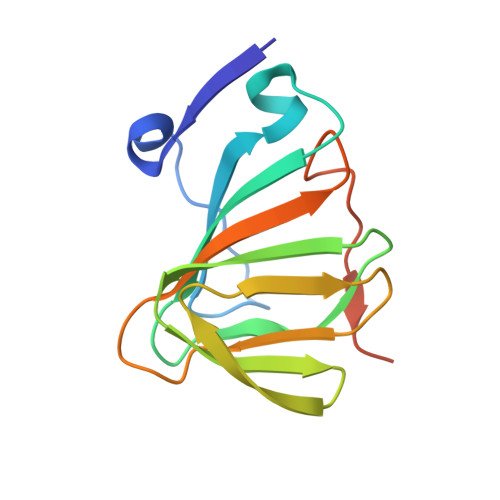Structure-Function Analysis Indicates that an Active-Site Water Molecule Participates in Dimethylsulfoniopropionate Cleavage by DddK.
Peng, M., Chen, X.L., Zhang, D., Wang, X.J., Wang, N., Wang, P., Todd, J.D., Zhang, Y.Z., Li, C.Y.(2019) Appl Environ Microbiol 85
- PubMed: 30770407
- DOI: https://doi.org/10.1128/AEM.03127-18
- Primary Citation of Related Structures:
6A53, 6A54, 6A55 - PubMed Abstract:
The osmolyte dimethylsulfoniopropionate (DMSP) is produced in petagram quantities in marine environments and has important roles in global sulfur and carbon cycling. Many marine microorganisms catabolize DMSP via DMSP lyases, generating the climate-active gas dimethyl sulfide (DMS). DMS oxidation products participate in forming cloud condensation nuclei and, thus, may influence weather and climate. SAR11 bacteria are the most abundant marine heterotrophic bacteria; many of them contain the DMSP lyase DddK, and their dddK transcripts are relatively abundant in seawater. In a recently described catalytic mechanism for DddK, Tyr64 is predicted to act as the catalytic base initiating the ¦Â-elimination reaction of DMSP. Tyr64 was proposed to be deprotonated by coordination to the metal cofactor or its neighboring His96. To further probe this mechanism, we purified and characterized the DddK protein from Pelagibacter ubique strain HTCC1062 and determined the crystal structures of wild-type DddK and its Y64A and Y122A mutants (bearing a change of Y to A at position 64 or 122, respectively), where the Y122A mutant is complexed with DMSP. The structural and mutational analyses largely support the catalytic role of Tyr64, but not the method of its deprotonation. Our data indicate that an active water molecule in the active site of DddK plays an important role in the deprotonation of Tyr64 and that this is far more likely than coordination to the metal or His96. Sequence alignment and phylogenetic analysis suggest that the proposed catalytic mechanism of DddK has universal significance. Our results provide new mechanistic insights into DddK and enrich our understanding of DMS generation by SAR11 bacteria. IMPORTANCE The climate-active gas dimethyl sulfide (DMS) plays an important role in global sulfur cycling and atmospheric chemistry. DMS is mainly produced through the bacterial cleavage of marine dimethylsulfoniopropionate (DMSP). When released into the atmosphere from the oceans, DMS can be photochemically oxidized into DMSO or sulfate aerosols, which form cloud condensation nuclei that influence the reflectivity of clouds and, thereby, global temperature. SAR11 bacteria are the most abundant marine heterotrophic bacteria, and many of them contain DMSP lyase DddK to cleave DMSP, generating DMS. In this study, based on structural analyses and mutational assays, we revealed the catalytic mechanism of DddK, which has universal significance in SAR11 bacteria. This study provides new insights into the catalytic mechanism of DddK, leading to a better understanding of how SAR11 bacteria generate DMS.
Organizational Affiliation:
Marine Biotechnology Research Center, State Key Laboratory of Microbial Technology, Shandong University, Qingdao, China.















